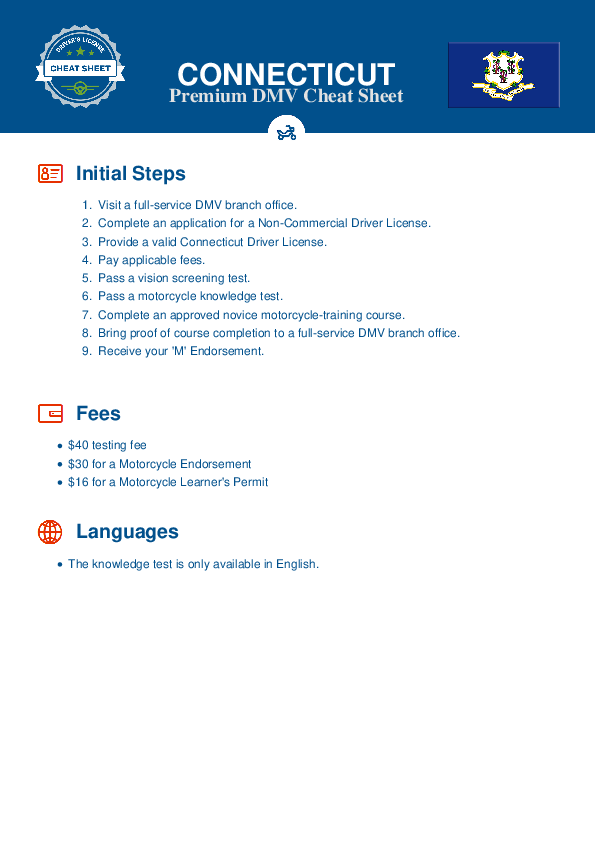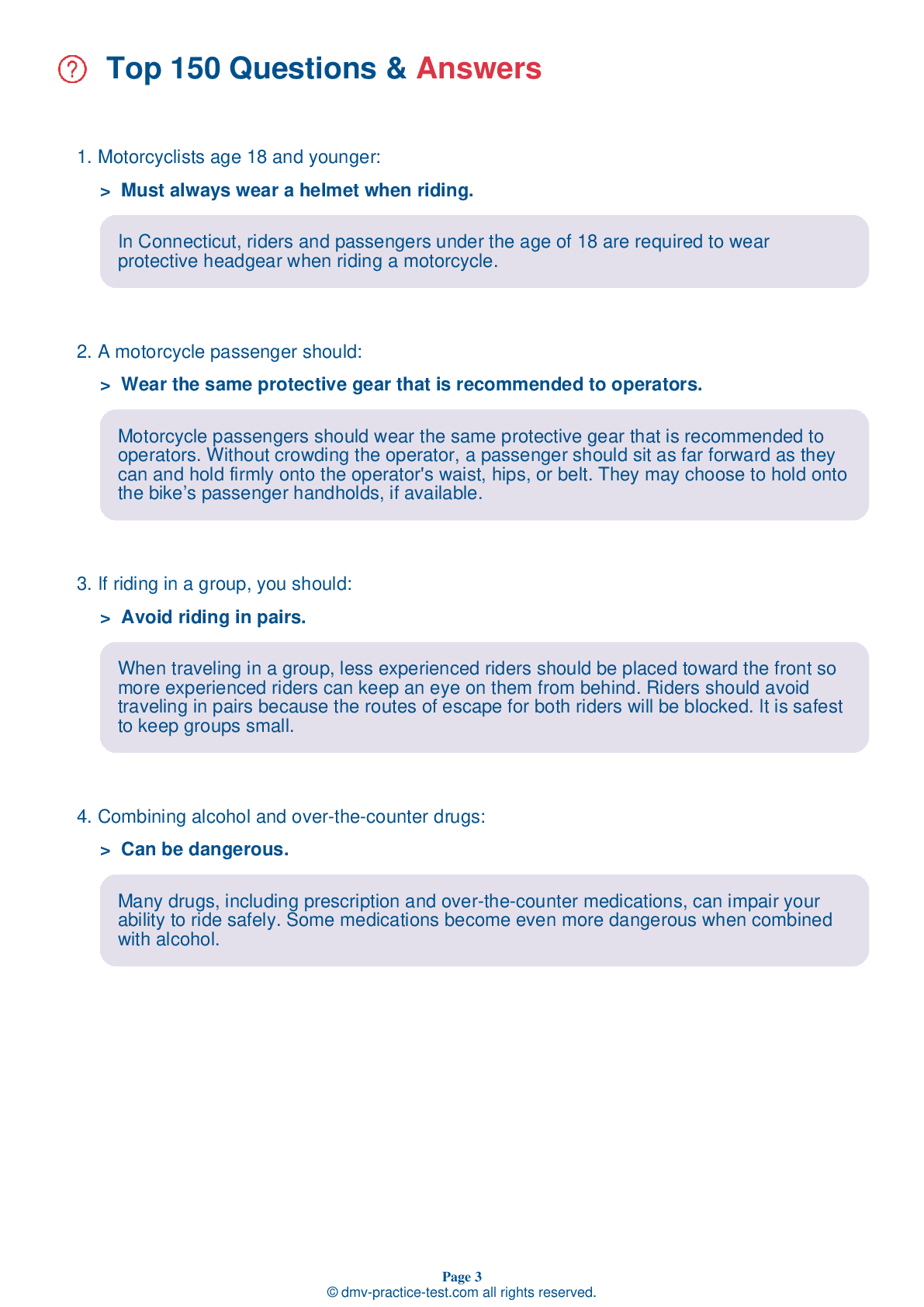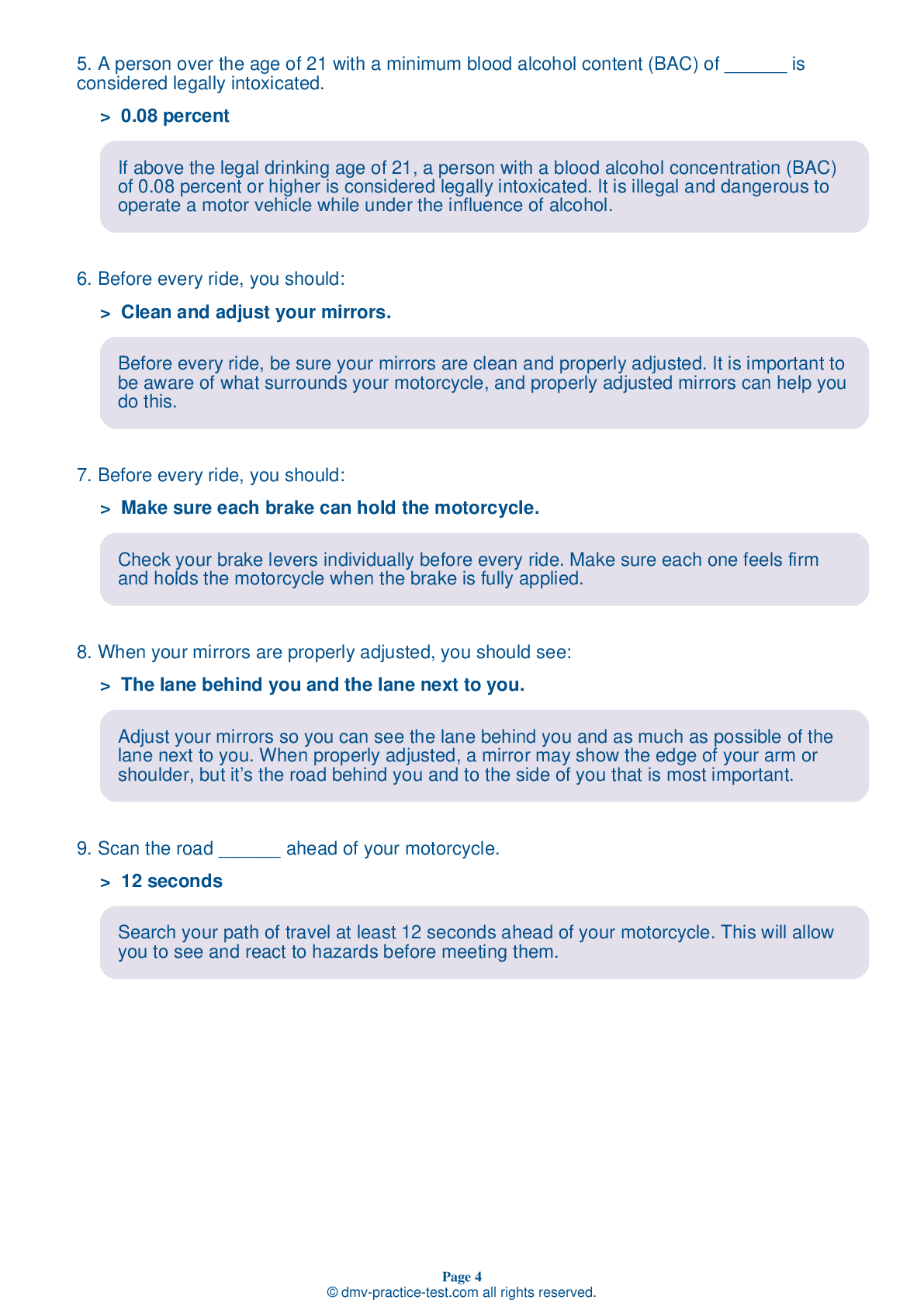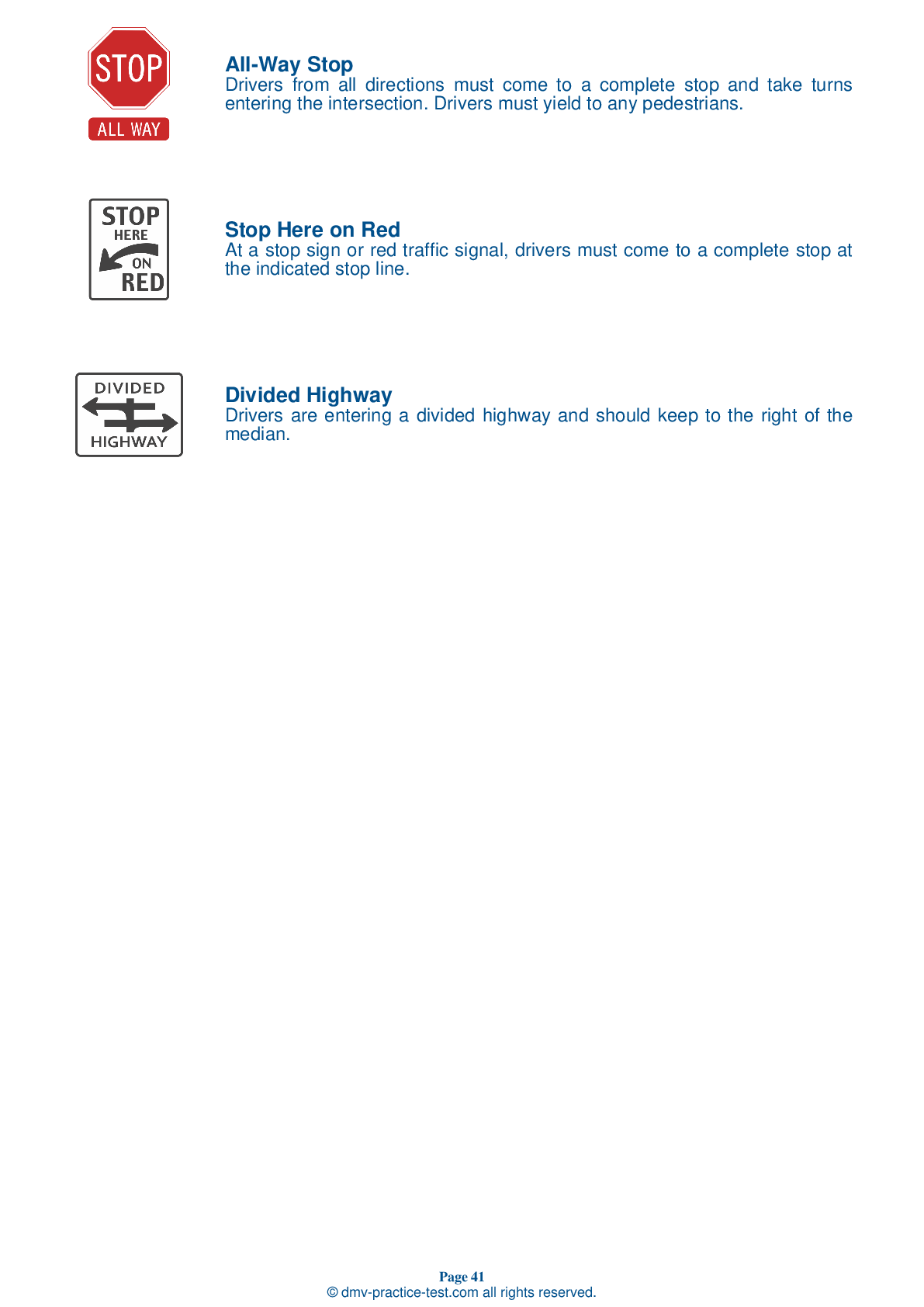Motorcycle Test | License CT 2025 | FREE Online Practice! #4
Take this FREE motorcycle test (license in CT 2025) to check your knowledge of the road rules. To improve your results, download a motorcycle handbook online, study theory, and practice for free on our website. Still worried about how to get a motorcycle license in Connecticut in 2025? Check our website for more sample tests, train as much as possible, and boost your grades!
1 . If no traffic is present when you are taking a curve, it is a good idea to start:
If no traffic is present when you are taking a curve, start on the outside of the curve to increase your line of sight and the effective radius of the turn. As you turn, move toward the inside of the curve. As you pass the center of the curve and prepare to exit, move back toward the outside position. Remain aware of changing road and traffic conditions and adjust as necessary.
2 . Before every ride, you should:
Check your brake levers individually before every ride. Make sure each one feels firm and holds the motorcycle when the brake is fully applied.
3 . If you cannot see through the vehicle ahead of you, your following distance should be a minimum of:
An expanded cushion of space is needed if your motorcycle will take longer than normal to stop. If the pavement is slippery, if you cannot see through the vehicle ahead of you, or if traffic is heavy and another driver may try to squeeze in front of you, open up to a minimum three-second following distance.
4 . Before starting a turn, a motorcycle rider should change gears to:
It is best to change gears before starting a turn. Shifting gears while in the turn can cause a sudden change in power to the rear wheel, causing a skid. If you must change gears while in a turn, change gears smoothly to best prevent skidding.
5 . When approaching multiple hazards at one time, you should:
When approaching multiple hazards at one time, you must be able to identify and separate the hazards. If possible, react to and safely pass one hazard before dealing with the next.
See the exact questions that will be on the 2025 Connecticut DMV exam.
99.2% of people who use the cheat sheet pass the FIRST TIME
Jeneen was tired of paying $5/gallon. She got herself a scooter that required the motorcycle license. She studyed the motorcycle test cheat sheet and passed her test the next day!
Christopher tells us how he knew nothing prior to obtaining the motorcycle study guide, and he only got one question wrong because he clicked on the wrong answer by mistake.



